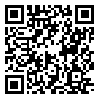Volume 20, Issue 134 (2023)
FSCT 2023, 20(134): 201-213 |
Back to browse issues page
Download citation:
BibTeX | RIS | EndNote | Medlars | ProCite | Reference Manager | RefWorks
Send citation to:



BibTeX | RIS | EndNote | Medlars | ProCite | Reference Manager | RefWorks
Send citation to:
Khezri M, khanzadi S, Hashemi M. Estimation and comparison of interalaboratoary standarad deviation (SIR) measurement uncertainty in Quantitative microbiological tests in different food items based on EN ISO:19036-2019. FSCT 2023; 20 (134) :201-213
URL: http://fsct.modares.ac.ir/article-7-66772-en.html
URL: http://fsct.modares.ac.ir/article-7-66772-en.html
1- 1Department of Food Hygiene and Aquaculture, Faculty of Veterinary Medicine, Ferdowsi University of Mashhad, Mashhad, Iran
2- Department of Food Hygiene and Aquaculture, Faculty of Veterinary Medicine, Ferdowsi University of Mashhad, Mashhad, Iran. ,khanzadi@um.ac.ir
2- Department of Food Hygiene and Aquaculture, Faculty of Veterinary Medicine, Ferdowsi University of Mashhad, Mashhad, Iran. ,
Abstract: (2088 Views)
The aim of study was estimated and compared intra-laboratory quantification deviation (SIR) or measurement uncertainty (MU) as a performance Charateristics in verification of the implementation step of quantitative test methods in food microbiology laboratories. The aerobic mesophilic colony counts of microorganisms (ACC) and Enterobacteriaceae colony count (ECC), as two important and common tests in the microbial evaluation of all type of food was selected and interlaboratoary standard deviation estimation of selected food items: minced meat, hamburger, soy powder, pasteurized liquid eggs, pasteurized and UHT milk, ice cream, Fruit juice, flour, cake and spice (PEPER) were calculated based on ISO-19036 standard method (2019). In this comparison, technical, matrix, distribution, confirmation and combined Uncertinity were calculated and reported. Calculation of the technical uncertainty of the ECC test in (pasteurized and ultra-heated milk, ice cream, fruit juice and pasteurized liquid eggs) by created the artificial contamination on three levels with the target organism (Shigella felxseneri) and in other food items it was natural contamination, in the ACC test was only natural contamination was calculated. The technical uncertainty results of the ECC test ranged from 0.487 to 0.07 and in the ACC test, from 0.390 to 0.105 log10 cfu/g. The highest values of technical and matrix uncertainty were observed in meat, cake, hamburger and cheese samples, which showed the heterogeneous foods (solid and semi-solid) and the lowest values were observed in liquid (homogeneous) samples. Evaluation of variability and followed the uncertainty is proposed as a way to standardize the expression of variability associated with data obtained in microbiological methods to highlight the causes and extent of several influencing factors.
Keywords: Aerobic mesophilic microorganisms, Enterobacteriaceae, Impementation verification, Measurement uncertainty, Performance characterisrics, reproducibility standard deviation and verification.
Article Type: Original Research |
Subject:
Food Microbiology
Received: 2023/01/13 | Accepted: 2023/03/7 | Published: 2023/04/7
Received: 2023/01/13 | Accepted: 2023/03/7 | Published: 2023/04/7
Send email to the article author
| Rights and permissions | |
 |
This work is licensed under a Creative Commons Attribution-NonCommercial 4.0 International License. |









